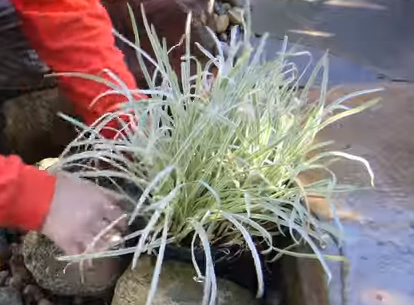ARTICLES
Advance Search
Aquatic Health
Aquatic Health, Fitness & Safety
Around the Internet
Aquatic Culture
Aquatic Technology
Artful Endeavors
Celebrity Corner
Life Aquatic
Must-See Watershapes
People with Cameras
Watershapes in the Headlines
Art/Architectural History
Book & Media Reviews
Commentaries, Interviews & Profiles
Concrete Science
Environment
Fountains
Geotechnical
Join the Dialogue
Landscape, Plants, Hardscape & Decks
Lighter Side
Ripples
Test Your Knowledge
The Aquatic Quiz
Other Waterfeatures (from birdbaths to lakes)
Outdoor Living, Fire Features, Amenities & Lighting
Plants
Ponds, Streams & Waterfalls
Pools & Spas
Professional Watershaping
Structures (Editor's Notes)
Travelogues & History
Water Chemistry
WaterShapes TV
WaterShapes World Blog
Web Links
Around the Internet
Aquatic Culture
Aquatic Technology
Artful Endeavors
Celebrity Corner
Life Aquatic
Must-See Watershapes
People with Cameras
Watershapes in the Headlines
Back in June 2012, the publisher of WaterShapes was kind enough to write a blog about our work with Project Scion, a program Zaretsky and Associates (Rochester, N.Y.) was helping to develop as a means of bringing green spaces to rough urban neighborhoods. At that stage, it was still a dream: We had just launched into our first round of funding through kickstarter.com and had no clear sense of how
The way I see it, the substantial amount of time and energy involved in a good, annual pond cleaning is definitely well spent. For one thing, it gives us at The Pond Digger Waterscape Design & Construction a chance to address any issues the homeowner may have noticed with the way the pond operates - everything from practical concerns about splashing in certain areas, for example, through to aesthetic
Devising an approach to the application of fields of glass tile to complex surfaces is never simple, but when your goal is to do so while minimizing cuts and eliminating any visual "tics" that might stand out like sore thumbs when the work is done? That's taking the work to a whole different level. The project under discussion here, built in Gilbert, Ariz., offered this sort of challenge twice - once in a large entryway waterfeature, and again in the backyard with an outsized
I'm still stunned by news of the intended merger between the National Swimming Pool Foundation and the Association of Pool & Spa Professionals. I've been a professional observer of the pool/spa component of the watershaping universe for more than 30 years now, and I was caught completely off guard by
i don't get to san francisco as often once did and that's a shame because there so much see do. on the plus side, however, when do make one of my infrequent trips bay area, there's always lot brand new me, even if it has been around for while. monument i'll discuss here example since 1998 or but i'd never come across until had reason visit moscone center downtown in 2007 convention centers go, is both modern imposing, real highlight me was yerba buena gardens,two-city-block= park situated such way that part actually over center. it's wonderful space highlighted by martin luther king jr memorial, set glass panels celebrating his life legacy. those engraved are mounted granite behind waterfall measuring 20 feet tall 50 long devised artist sculptor houston conwill collaboration with poet estella majoza architect joseph de pace.
And as you move away, you appreciate the fact that the sound of the waterfalls also masks a great deal of traffic noise. And the same can be said for the perimeter-overflow fountain on the terrace just above the waterfalls: It's hard to get a break from general urban clattering in a place like downtown San Francisco, and these watershapes succeed at it to a wonderfully welcome degree.
We have a trip to San Francisco planned for this summer: This will definitely make it to my short list of stops while we're there - provided I don't get distracted by something new!
For a video that puts the waterfall on full display, click here. For a look at the watershape on the upper terrace, click here. For a glimpse inside the memorial, click here.
With the huge pond and a moat that wraps itself around the house, it's a variety of watershaping you'd ordinarily associate with a medieval French castle. But actually, it's part of a contemporary estate in Brentwood, Calif., in the backyard of a couple with an amazing desire for an aquatic kingdom they could call their own. The couple had recently moved from the eastern United States and decided to take the fullest possible advantage of
'It's a fact of life,' declared David Tisherman in opening his Details column 15 years ago this month: 'The best design feature in the world isn't worth anything if it isn't executed properly. And no matter how good your in-house staff or subcontractors are, they need guidance when it comes to the nuts-and-bolts work of getting the job done the way its designer intends.' '[W]hen you have good, tight supervision provided by a knowledgeable overseer working with good crews and a good set of plans, anything
The fun thing about working on spec houses is that, every once in a while, you run into a client who truly wants to blow the doors off - in the best way possible, of course. That was certainly true here: The home is right on the water on one of the islands in Biscayne Bay where Miami's elite prefer to live, and the eventual asking price for the property was in the $26 million range, give or take. It's an area where few
I feel as though I've just taken a big step into the Modern Age - and now I wonder why the heck it took me so long to get here. Long story short, I was having a problem with one of the valves on our pool-equipment pad not long ago, gave up with fixing it myself and called in a service-technician friend of mine to have a look. He took care of the problem, then lectured me about





















The Educational Imperative